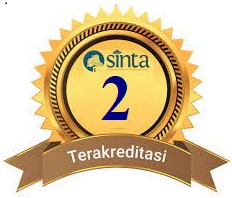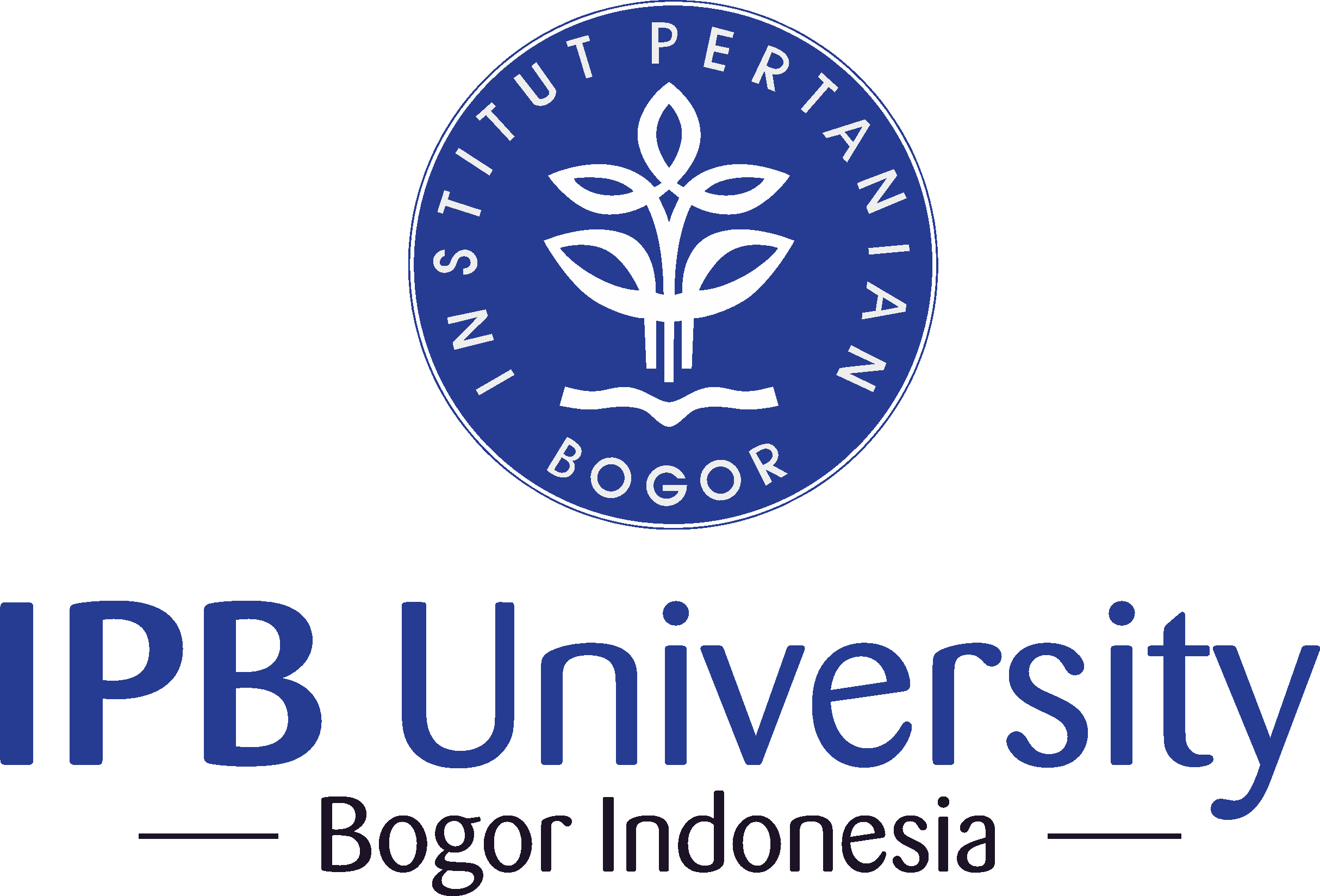Penapisan dan Karakterisasi Amilase dari Bakteri Asal Ekoenzim
Abstract
Eco-enzymes are one of the potential sources for obtaining amylolytic bacterial isolates. The study aims to screen amylolytic bacteria from eco-enzymes, characterize semi-purification amylase, and identify amylolytic bacteria molecularly using the 16S rRNA gene. Screening for amylolytic bacteria was carried out by measuring the amylolytic index on a Nutrient agar medium containing 1% tapioca starch. The amylolytic isolate which had the highest index and was non-pathogenic was selected for the amylase characterization process. Testing of amylase activity was carried out using the Bernfeld method while the protein enzymes were measured using the Bradford method. The extracellular extract was concentrated using ammonium sulfate precipitation. PKL2 is gram-positive bacteria that was derived from eco-enzymes with the highest amylolytic indexes of 1.77, which were not pathogenic on the blood agar test. Optimum amylase was produced by PKL2 at the stationary phase at 21 h. The optimum pH and temperature of the amylase activity were observed to be 7.0 and 50°C, respectively. The amylase enzyme from PKL2 increased its purity 1.82-fold upon precipitation of ammonium sulfate at a concentration of 60%. Identification of bacteria based on molecular identification showed that PKL2 obtained was putatively identified as Bacillus amyloliquefaciens.
Keywords: Amylase activity, Bacillus amyloliquefaciens, eco-enzyme, optimum pH
Downloads
References
Abate CM, Castro NGR, Sineriz F, Callieri DAS. 1999. Production of amylolytic enzymes by Bacillus amyloliquefaciens in pure culture and in co-culture with. Zymomonas mobilis. Biotechnology Letters 21(3): 249–252. https://doi.org/10.1023/ A:1005477505 683
Alvez KJ, Silva MCP, Cotta SR, Ottoni JR, Elsas JD, Oliveira VM, Andreote FD. 2020. Mangrove soil as a source for novel xylanase and amylase as determined by cultivation-dependent and cultivation-independent methods. Brazilian Journal of Microbiology. 51: 217–228. https://doi.org/ 10.1007/s42770-019-00162-7
Ashraf MA, Arshad MI, Rahman S, Khan A. 2018. Characterization of moderately thermostable -amylase-producing Bacillus licheniformis from decaying potatoes and sweet potatoes. BioResources. 13(3): 4931–4945. https://doi.org/ 10.15376/biores.13.3.4931-4945
Baltaci MO, Orak T, Taskin M, Adiguzel A, Ozkan H. 2020. Enhancement of amylase and lipase production from Bacillus licheniformis 016 using waste chicken feathers as peptone source. Waste Biomass Valor. 11: 1809–1819. https://doi.org/ 10.1007/s12649-018-0468-6
Bernfeld P. 1995. Amylases α- dan β-. Di dalam : Coloowick SP dan Kaplan No. (Eds). Methods In Enzymology. New York (US): Academic Press. Pp: 149–150.
Bradford MM. 1976. A rapid and sensitive method for the quantitation of microgram quantities of protein utilizing the principle of protein-dye binding. Analytical Biochemistry. 72(1–2): 248–254. https://doi.org/10.1016/0003-2697(76)90527-3
Dennison C. 2002. A guide to protein isolation. New York (US): Kluwer Academic Publishers. https://doi.org/10.1007/0-306-46868-9
Fossi BT, Tavea F, dan Ndjouenkeu R. 1995. Production and partial characterization of a thermostable amylase from ascomycetes yeast strain isolated from starchy soils. African Journal of Biotechnology. 4(1):14–18.
Gupta R, Gigras P, Mohapatra H, Goswami VK, Chauhan B. 2003. Microbial α-amylases: a biotechnological perspective. Process Biochemistry 38(11): 1599–1616. https://doi.org/10.1016/S0032-9592(03)00053-0
Hiteshi K, Didwal G, Gupta R. 2016. Production optimization of α-amylase from Bacillus licheniformis. Journal of Advance Research in Biology & Pharmacy Research. 2(5): 1–14. https://doi.org/10.53555/nnbma.v2i5.497
Indriati G, Megahati RRP, Rosba E. 2018. Potency of amylase-producing bacteria and optimization amylase activities. IOP Conference Series: Materials Science and Engineering. 335(1). https://doi.org/10.1088/1757899X/335/1/012023
Jamilah I, Meryandini A, Rusmana I, Suwanto A, Mubarik NR. 2009. Activity of proteolytic and amylolytic enzymes from Bacillus spp. isolated from shrimp ponds. Microbiology Indonesia 3: 67–71. https://doi.org/10.5454/mi.3.2.4
Kerkar SS, Salvi SS. 2020. Application of eco-enzyme for domestic waste water treatment. International Journal for Research in Engineering Application & Management (IJREAM). 5(11): 2454–9150
Kumar P, Shree RP. 2016. Isolation and characterization of halophilic amylolytic bacteria. Journal of Microbiology and Biotechnology Research. 6(4): 7–13.
Mamulak YI. 2018. Isolasi dan karakteristik bakteri amilolitik dari limbah rumah tangga di Kelurahan Merdeka Kupang. In: Proceedings of Seminar Nasional Biologi Tropika 2018, Yogyakarta (ID): 29th June 2018.
Ngalimat MS, Yahaya RSR, Baharudin MMA, Yaminudin SM, Karim M, Ahmad SA, dan Sabri S. 2021. A Review on the biotechnological applications of the operational group Bacillu amyloliquefaciens. Microorganisms. 9: 614. https://doi.org/10.3390/ microorganisms9030614
Nurhayati T, Nugraha R, Lihuana DN. 2020. Karakterisasi fraksi amonium sulfat tripsin yang diisolasi dari usus ikan tongkol (Euthynnus affinis). Jurnal Pengolahan Hasil Perikanan Indonesia. 23(2): 372–382. https://doi.org/10.17844/jphpi. v23i2.32221
Nurmalinda A, Periadnadi, Nurmiati. 2013. Isolasi dan karakterisasi parsial bakteri indigenous pemfermentasi dari buah durian (Durio zibethinus Murr.). Jurnal Biologi Universitas Andalas. 2(1): 8−13.
Nusrat A, Rehman SR. 2007. Partial characterization of extracellular α-Amylase from three Bacillus isolates. Bangladesh Journal of Microbiology. 25(1): 76–78. https://doi.org/10.3329/bjm.v25i1.4864
Parmar D, Pandya A. 2012. Characterization of amylase producing bacterial isolates. Bulletin of Environment, Pharmacology and Life Sciences. 1(6): 42–47.
Reddy NS, Nimmagadda A, Rao K. 2003. An overview of the microbial α-amylase family. African Journal of Biotechnology. 2(12): 645–648. https:// doi.org/10.5897/AJB2003.000-1119
Saputro MNB, Mubarik NR, Meryandini A. 2008. Optimalisasi produksi α-amilase dan glukoamilase. dari bakteri proteolitik asal pencernaan ikan nila GIFT. Biosainstifika 1(1): 21-34.
Singh R, Kumar V, Kapoor V. 2014. Partial purification and characterization of a heat stable α-amylase from a thermophilic actinobacteria, Streptomyces sp. MSC702. Enzyme Research. 6: 106363. https://doi.org/10.1155/2014/106363
Sivaramkrishnan SD, Gangadharan KD, Nampoothiri CR, Sossol, Pandey A. 2006. α-Amylase from microbial sources: An overview on recent developments. Food. Technology Biotechnology. 44(2): 173–184.
Sundari AS, Purwani NNP, Kurniati A. 2019. Isolasi dan penentuan indeks amilolitikbakteri dari sediment mangrove di Wonorejo, Surabaya. Jurnal Inovasi Pendidikan Sains. 10(1): 38–44. https://doi.org/ 10.20527/quantum.v10i1.5879
Suryanto D, Irmayanti, Lubis S. 2007. Karakterisasi dan uji kepekaan antibiotik beberapa isolat Staphylococcus aureus dari Sumatera Utara. Majalah Kedokteran Nusantara. 40(2): 104–107.
Uygut, MA, Tanyuldizi MS. 2018. Optimization of alpha-amylase production by Bacillus amyloliquefaciens grown on orange peels. Iranian Journal of Science and Technology. Transaction A, Science. 42: 443–449. https://doi.org/10.1007/s40995-016-0077-9
Vama L, Cherekar MN. 2020. Production, extraction and uses of eco-enzyme using citrus fruit waste: wealth from waste. Asian Journal of Microbiology, Biotechnology & Environmental Sciences. 22(2): 346–351.
Verma D, Singh AN, Skhula AN. 2019. Use of garbage enzyme for treatment of waste water. International Journal of Scientific Research and Review. 7(7): 201–205.
This journal is published under the terms of the Creative Commons Attribution-NonCommercial 4.0 International License. Authors who publish with this journal agree to the following terms: Authors retain copyright and grant the journal right of first publication with the work simultaneously licensed under a Creative Commons Attribution-NonCommercial 4.0 International License. Attribution — You must give appropriate credit, provide a link to the license, and indicate if changes were made. You may do so in any reasonable manner, but not in any way that suggests the licensor endorses you or your use. NonCommercial — You may not use the material for commercial purposes.






















